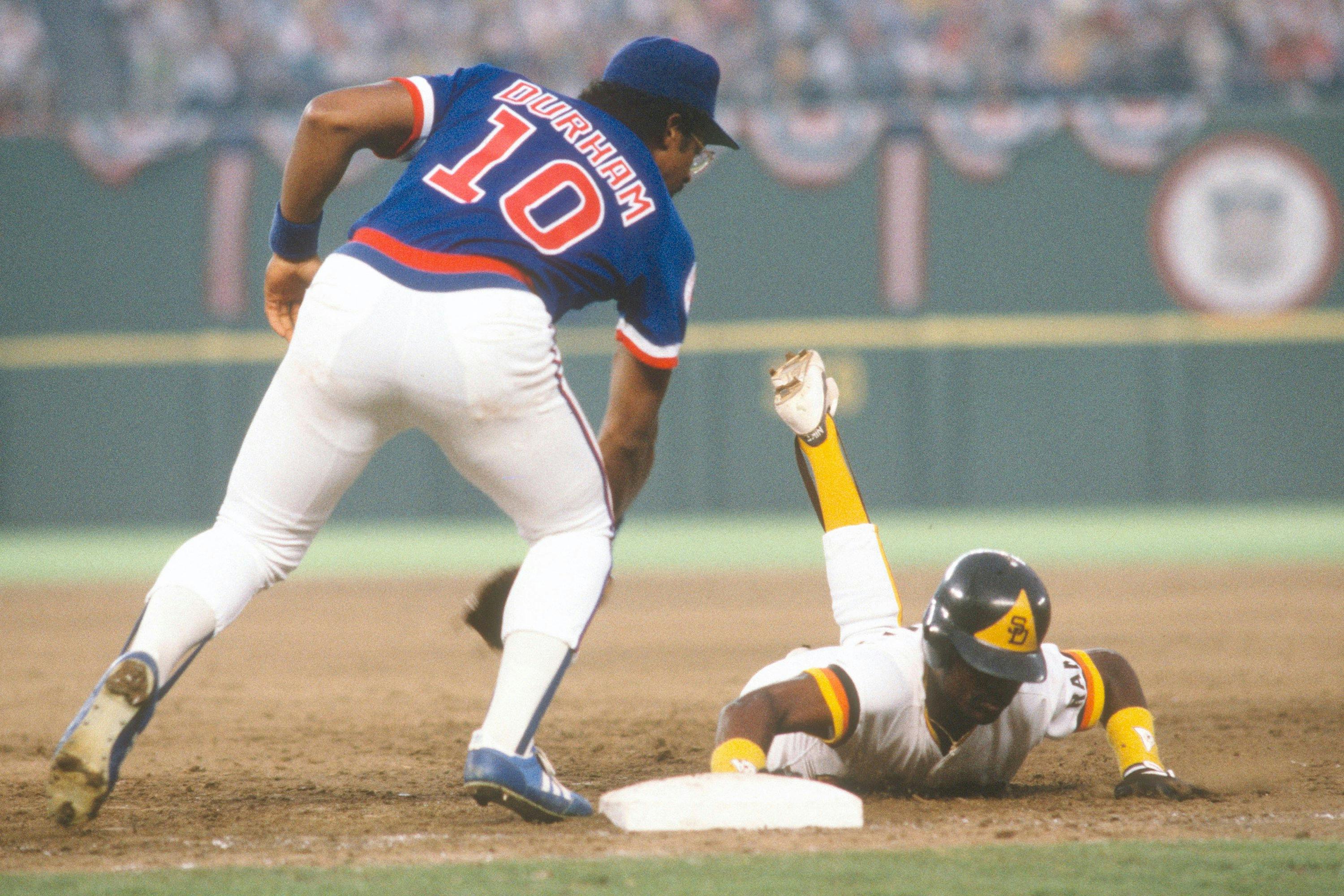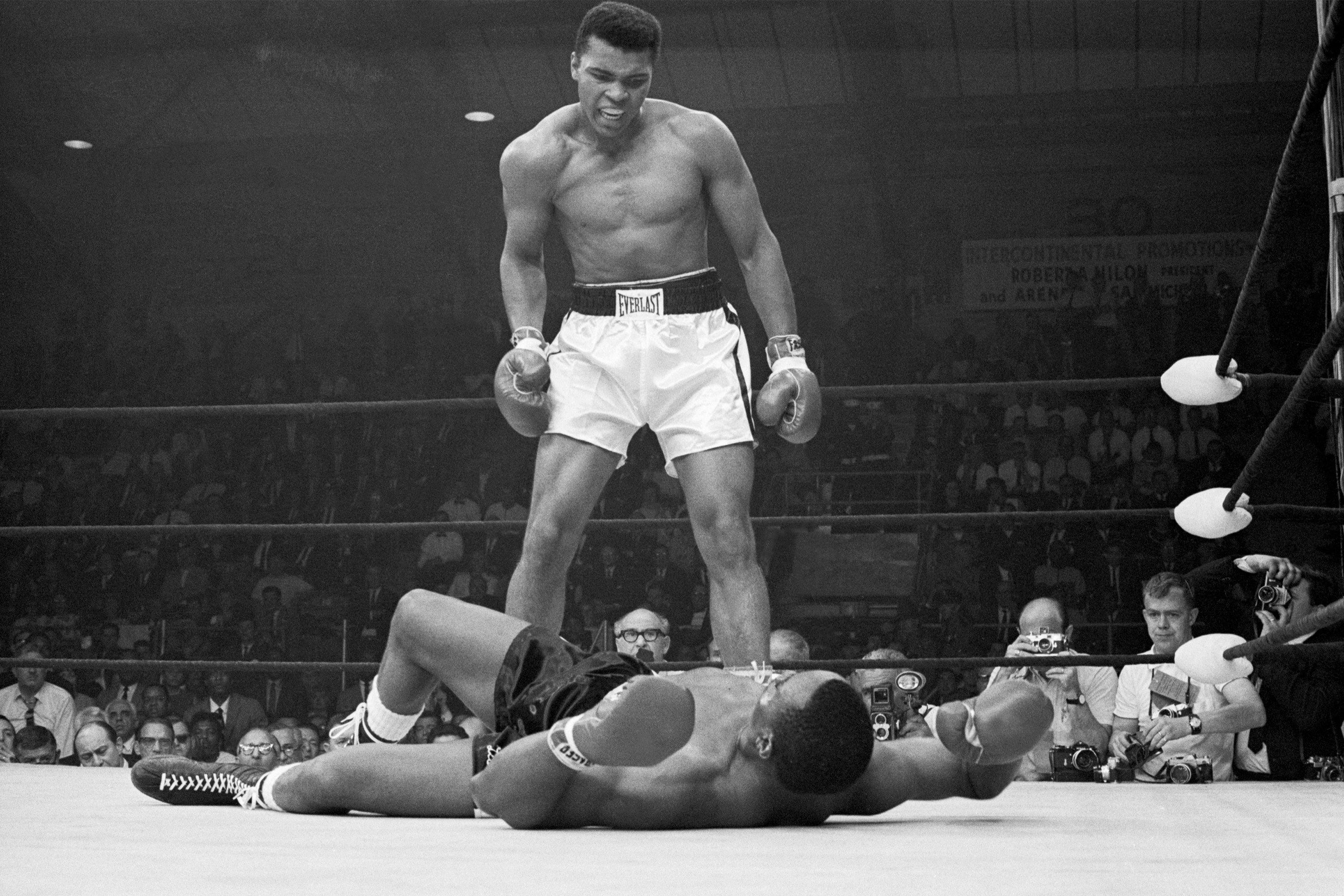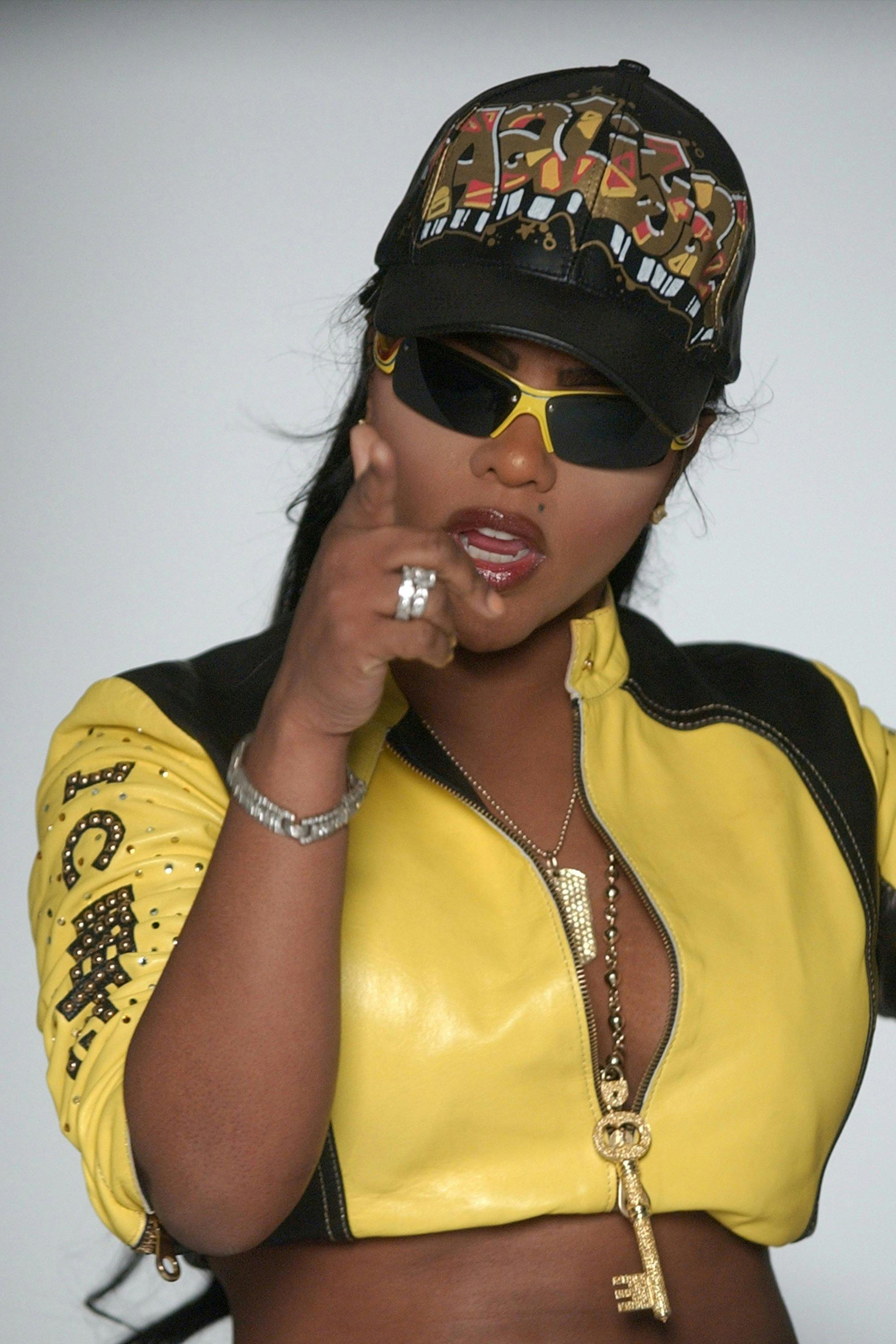
How Hip-Hop Brought The G.O.A.T. to the Mainstream
How Hip-Hop Brought The G.O.A.T. to the Mainstream
By Alec Banks
Published Mon, June 22, 2020 at 3:12 PM EDT
Every January, members of the American Dialect Society gather to choose the Word of the Year. Past winners include “unfriend,” “selfie,” “vape,” “toxic,” and—even a pictograph — “crying face emoji.” The Word of the Year may get top billing, but there are equally enlightening subcategories, such as “Political Word of the Year,” “Digital Word of the Year,” “Most Useful,” “Most Likely to Succeed,” “Most Creative,” “Euphemism of the Year,” “WTF Word of the Year,” “Hashtag of the Year,” and “Slang/Informal Word of the Year.”
These subcategories illustrate that linguists have come a long way in accepting that the English language may be rooted in formal tradition, yet there’s room for contemporary additions fueled by many fields, including technology, sports, and music.
The acronym GOAT is a perfect representation of the evolution of language. Whereas the phrase “The Goat” once had a negative connotation, it now represents a pop culture catchall for “The Greatest of All Time.”
In 2018 GOAT was one of more than 840 new entries in the Merriam-Webster dictionary. According to Peter Sokolowski, a Merriam-Webster editor, GOAT met the required criteria: research revealed that GOAT was first used online in 1996 in an Orlando Magic forum referencing guard Penny Hardaway. But how did it transcend from an obscure reference on the internet to common usage?
The answer: Hip-Hop culture. And specifically, LL COOL J’s 2000 album, G.O.A.T. Featuring James T. Smith, the Greatest of All Time.
The four elements of Hip-Hop remain an integral piece of the puzzle when examining how a word or a trend goes mainstream. Sampling records, street-fueled dance styles, writing graffiti/street art, and slang usage is now widely accepted. But it comes at a price. Recent Black Lives Matters protests support the fact that many aspects of society were built upon the disenfranchised.
Lexicographer Jesse Sheidlower worked as an editor at Random House Dictionary and the Oxford English Dictionary, focusing on new words and slang born of the underrepresented. He states that popular slang comes from a place of oppression. As a result, Hip-Hop — which is uniquely an immigrant’s story when it was started by Jamaican-born DJ Kool Herc in 1973 — has a 47-year history of moving the cultural needle.
While The GOAT has become an argument based around context — like debating who might be The Greatest of All Time in various fields — Sheidlower stresses that its impact is derived from Hip-Hop. He says, “Is there earlier evidence than the LL COOL J album for [The G.O.A.T.]? Yes. [But] we can absolutely say that’s what popularized it. It wasn't widely used before that.”

Photo by Focus on Sport/Getty Images
SCAPEGOATS
Long before LL COOL J decided to use an acronym to make his case as The Greatest of All Time, calling someone a “goat” was an insult.
In 1957, cartoonist Bill Gallo’s “Hero and the Goat” feature began appearing in the New York Daily News. Gallo was inspired to create this unique combination in a sketch after realizing that every World Series game — in his own estimation — produced one hero and one goat. If a player performed poorly, he’d be depicted in the newspaper with goat horns. Notable legends like Mickey Mantle, Duke Snyder, and Willie Mayes all received the dubious distinction.
According to the blog Grammarphobia, the earliest example of “goat” used in a sports sense is from third edition of The Dickson Baseball Dictionary by Paul Dickson. The passage in question was taken from the October 10, 1909 issue of the St. Louis Post-Dispatch: “Catcher [Charles] Schmidt, who had been the ‘goat’ of the first game [of the World Series] redeemed himself at this time.”
Dickson then noted that most references to the term in baseball usage was derived from “scapegoat,” which refers “to a player whose error is being blamed for a team’s defeat.” However, he was challenged on this point by language researcher Gerald L. Cohen in the December 1, 1985 issue of Comments on Etymology. A “goat” could not be shorthand for “scapegoat” because a goat deservedly catches flack for its own error while a scapegoat is falsely blamed.
In a baseball context, three prominent examples of the use of “goat” involved the Chicago Cubs. The Cubs were said to have been cursed by William Sianis, the owner of the Billy Goat Tavern, when the ball club asked that he and his pet goat, Murphy, leave Game 4 of the 1945 World Series. According to legend, Sianis invoked a curse on the Cubs that they would never win another National League pennant.
In 1984, Cubs first baseman, Leon “Bull” Durham, let a routine ground ball get by him in Game 5 of the 1984 National League Championship Series against the San Diego Padres — shortly after Ryne Sandberg accidentally spilled Gatorade on Durham’s glove. The Padres went on to score four runs and the series.
In 2003, Cubs fan Steve Bartman prevented left fielder Moisés Alou from catching a foul ball down the line. If Alou had corralled it, the Cubs would have been four outs away from winning the team’s first pennant since 1945. Instead, they allowed eight runs that inning and were eliminated in Game 7 the following night.
The Cubs finally exorcised their demons in 2016, but the city’s relationship with “goat” as a moniker remains a complicated one. While it will forever hold a negative connotation on much of the North Side, Michael Jordan’s performances on the West Side speak to The GOAT as an acronym: Greatest of All Time.
Longtime sports photographer Bill Smith, who has covered the Bulls, the Blackhawks, and the Bears, was often around during the intimate moments depicted in the Bulls docuseries The Last Dance. It’s clear to him why Jordan gets called The GOAT.
“We used to say [Michael Jordan] was the greatest player of all time,” says Smith. “I don’t know how long the actual GOAT thing has been around. I don’t remember it except for the last few years. I once took a picture of Michael and Muhammad Ali together, outside the Bulls locker room, and I tell people that ‘Here’s the two greatest athletes of all time.’ ”

Getty Images
MUHAMMAD ALI
On February 25, 1964, Muhammad Ali (known then as Cassius Clay) was set to take on Sonny Liston for the World Heavyweight Championship in Miami. Liston was riding high as the belt holder after back-to-back first-round knockouts against Floyd Patterson. As a result, the 19-0 Ali was a 7-1 underdog against the older and more seasoned 35-1 Liston.
The weigh-in was not without incident. Ali had been warned by Miami Beach Boxing Commissioner Morris Klein against any “wild demonstrations” that had become something of a trademark for the 22-year-old.
“I am the greatest!” Ali shouted atop the temporary platform while brandishing his fists at Liston. “I am the best in the world!”
Liston showed no emotion — other than a sly wink at someone nearby — and the casual raising of two fingers that many interpreted as a prediction of the round when Ali would fall. The commission doctors who examined both fighters said Ali’s pulse was racing at 120 beats per minute, while Liston’s rested at 80. Chief physician of the Miami Boxing Commission Alexander Robbins determined that Ali was “emotionally unbalanced, scared to death, and liable to crack up before he enters the ring.” He stated that if Ali’s blood pressure didn’t return to normal, the fight would be canceled.
“I am going to eat you alive!” Ali continued to shout.
Liston cupped his hands over his mouth and said in a low tone, “Don’t you know what a fool you are.”
Klein intended to withhold Ali’s purse for the outburst, but he settled for a $2,500 fine and warned against anything similar coming from The Louisville Lip during the lead-up to the 10 p.m. fight.
Liston spent the evening at home on Pine Tree Drive playing cards with friends before heading over to the Miami Beach Convention Hall to inspect the ring. He stood at the fringe of the $20 seats and watched as one of his trainers, Joe Polino, inspected the 18-foot ring that still hadn’t had the ropes tightened. The thought of the $1.5 million payday was surely on his mind.
Ali ultimately dispatched Liston after the former champ couldn’t answer the bell in the seventh round after suffering a shoulder injury. The new champion punctuated his victory with what would come to be called the “Ali Shuffle.” He was the second youngest, second least experienced, and the second longest bet to become Heavyweight Champion of the World.
It was the realization of a childhood dream. When Ali was 11, he yearned for the title. He listened on the radio as Rocky Marciano defended his own title. He rode off in the rain on his bicycle later that night and contemplated becoming “Greatest of All Time.”
In September 1992, Ali’s wife Lonnie incorporated G.O.A.T. Inc., a company created as an umbrella for all the boxer’s intellectual properties used for commercial purposes. The acronym’s usage is now widely accepted by word professionals as the first time it actually meant “Greatest of All Time.”
LL COOL J credits Ali’s style in the ring, his outspoken attitude, and Lonnie Ali’s business decision as major factors in titling his 2000 album.
“My mother really got me into boxing as a little kid and I just was attracted to it very early on,” he says. “She was heavily influenced by Ali, and it just rubbed off on me. He was the archetype for all things black and proud. He was just an inspirational human being who lived life on a grand scale in terms of his spirit and what he brought to the world. He would’ve made a phenomenal MC, and it’s pretty obvious that had he been born in that era — under those circumstances — he would’ve absolutely gravitated towards it. I don’t even think there’s a doubt in it.”
EARL THE GOAT
Legendary street basketball player Earl Manigault started playing b-ball in the fifth grade in Harlem. By middle school, he had a 52-point game under his belt.
In 1966, 12-year-old Manigault had already earned a reputation throughout the Upper West Side as one of the most ferocious dunkers in the neighborhood. Butch Purcell, who grew up on the same block with Earl, recalled the phenom strapping five-pound weights to his ankles so he could strengthen his legs while jogging to school. His nickname — Goat — came from a teacher who mispronounced his name as “Mani-goat.” As word about his skills spread, older kids spoke of “Manny Goat,” while younger kids used markers to scrawl the word “Goat” on their sneakers.
His stage was the Happy Warrior Playground on W. 97th Street and Amsterdam Avenue. Spectators marveled as the 6-foot-1-inch guard (short for a basketball player) used his 50-inch vertical leap to snatch quarters off the backboard, dunked a ball backward 36 times in a row to win a $60 bet, and performed what was called his “double dunk” — jamming the ball twice through a hoop on a single jump.
Manigault’s athletic feats were not solely reserved for Happy Warrior. He reportedly dunked on Lew Alcindor (now Kareem Abdul-Jabbar) at Riis Beach, bested Connie Hawkins and Joe “The Destroyer” Hammond on another playground, and got both Vaughn Harper and Val Reed on 113th Street.
“Earl and I would get together on Saturday mornings and play a lot of three-on-three basketball in the park or wherever the real good games were being played,” Abdul-Jabbar said in an interview several years ago. “Earl was more of a street player than I was, so he never really got the same type of mainstream recognition that I got in high school.”
Manigault’s star shined equally bright in sanctioned games at Benjamin Franklin High School. By the time he was a junior, he averaged 24 points per game. But Manigault’s basketball career would be stunted during his senior season after he was caught smoking weed under a stairwell and was subsequently expelled. He spent one season at Laurinburg Institute, a North Carolina prep school, where he drew the attention of schools such as the University of North Carolina, Duke, and Indiana University.
Instead he chose to attend Johnson C. Smith University, a predominantly black school in Charlotte, North Carolina. However, his style of play and academic difficulties resulted in a return to New York City playgrounds.
Drug addiction began to destroy his basketball skills. He fed his $100-a-day habit by stealing furs and fencing them in the Garment District. He said he never once thought about playing basketball during his three years of using intravenous drugs.
In 1969, Manigault was arrested for drug possession. He spent 16 months of a five-year sentence at the Green Haven Correctional Facility in Stormville, New York A year later, he got a tryout with the Utah Stars of the American Basketball Association. The 26-year-old was cut after one week. He simply didn’t have it anymore.
Manigault eventually kicked his heroin habit. After surviving two heart surgeries in the ’80s, he began working in Harlem for the Supportive Children’s Advocacy Network, a recreation and counseling center.
As Manigault got his life together, Happy Warrior Playground became the site of another future GOAT. The Rock Steady Crew — a pioneering and revolutionary group of b-boys — took breaking from on concrete to the top of cardboard boxes pilfered from a nearby appliance store. Eventually, the park earned the unofficial name of Rock Steady Park.
“We were the ghetto celebs of dance [and] people would walk by Rock Steady Park in the early ’80s and peek in and see us hanging out,” recalls Rock Steady President Crazy Legs, whom many consider the GOAT of breaking.
In 1998, the city of New York honored Manigault at Happy Warrior Playground. Two newly constructed basketball courts were appropriately named “The Goat Courts” with a sign that read “Thank you for the air show and for the friendship you showed us.”
Today the New York City Parks Department recognizes the informal usage of the name “Rock Steady Park,” noting, “Rock Steady Crew practiced their footwork and routines in Happy Warrior Playground, among other parks.”


Photo by Anthony Barboza/Getty Images/ Photo by Theo Wargo/WireImage
HIP-HOP
There is no shortage of the usage of slang and acronyms in Hip-Hop. The latter has been immortalized in albums such as Prodigy’s H.N.I.C., Pete Rock & CL Smooth’s T.R.O.Y., Wu-Tang’s C.R.E.A.M., Ice-T’s L.G.B.N.A.F., 2Pac’s Strictly for My N.I.G.G.A.Z., Common’s I Used to Love H.E.R., Kendrick Lamar’s m.A.A.d. city, and LL COOL J’s The G.O.A.T.
The seedlings of The G.O.A.T in a Hip-Hop context began in 1997 on LL COOL J’s posse cut, “4, 3, 2, 1,” which featured Redman, Method Man, DMX, and Canibus.
“Watch your mouth, don’t step out of line, LL COOL J, greatest of all time,” raps LL COOL J.
LL COOL J states that the genesis of his 2000 album title stems from his knowledge of both Ali’s skill in the ring and Manigault’s prowess on the basketball court. While he was talking to a friend, those two things just seemed to merge in his mind.
“We were kicking it back and forth, and the next thing I know I’m like, ‘You know what? G.O.A.T. Greatest of all time. I’m the G.O.A.T.’ That was it,” says LL COOL J. “I had no idea that is was going to end up being what it was. It ended up becoming part of the lexicon of the English language. The internet took it, adapted it, and ran with it.”
Since “goat” was widely interpreted as a negative at the time, reviewers seemed puzzled by the album title. J.D. Considine wrote in the Baltimore Sun, “At first glance, G.O.A.T. seems an unduly modest title. After all, to play the goat means to accept derision and demean one’s standing.”
In subsequent years, many artists including JAY-Z and Lil’ Kim have proclaimed GOAT status. Not one to simply let others take ownership of the acronym, LL COOL J doubled down on the claim with 2013’s “Rocking With the G.O.A.T.”
Sheidlower states that the usage of acronyms in the English language began in the 1940s. Since Hip-Hop is built around a showcase of lyrical ability, he understands why acronyms remain a constant.
“Any new technique or style is another possible way of expressing yourself,” he says. “The use of acronyms — or any other feature like this — is another way that you can show off. That has been ongoing for a while — especially in Hip-Hop culture. Broadly speaking, the use of ‘bad’ to mean ‘good’ actually goes back in African-American youth to before 1900. And again, there are many examples in Hip-Hop culture like ‘ill,’ ‘crazy,’ and ‘sick.’ ”
In 1987, Fab 5 Freddy interviewed then-18-year-old LL COOL J, who was still living with his grandmother in St. Albans, Queens. Freddy prefaced the interview by saying, “While we’re talking, I want us to use a lot of slang and shit because I don’t want this to be like a typical interview.” LL COOL J responded, “I’ll just speak how I speak.”
While the conversation touched on many subjects, LL did comment on slang directly credited to him at the time: “Put your weight on it.” While the phrase never caught on quite like The GOAT did, LL COOL J took a shot and missed. Ali, Manigault, MJ, Brady — and a multitude of other GOATs — know the feeling.
* Banner Image: LL COOL J pokes out of the sunroof of a limousine New York City / Photo by Michael Ochs Archives/Getty Images



